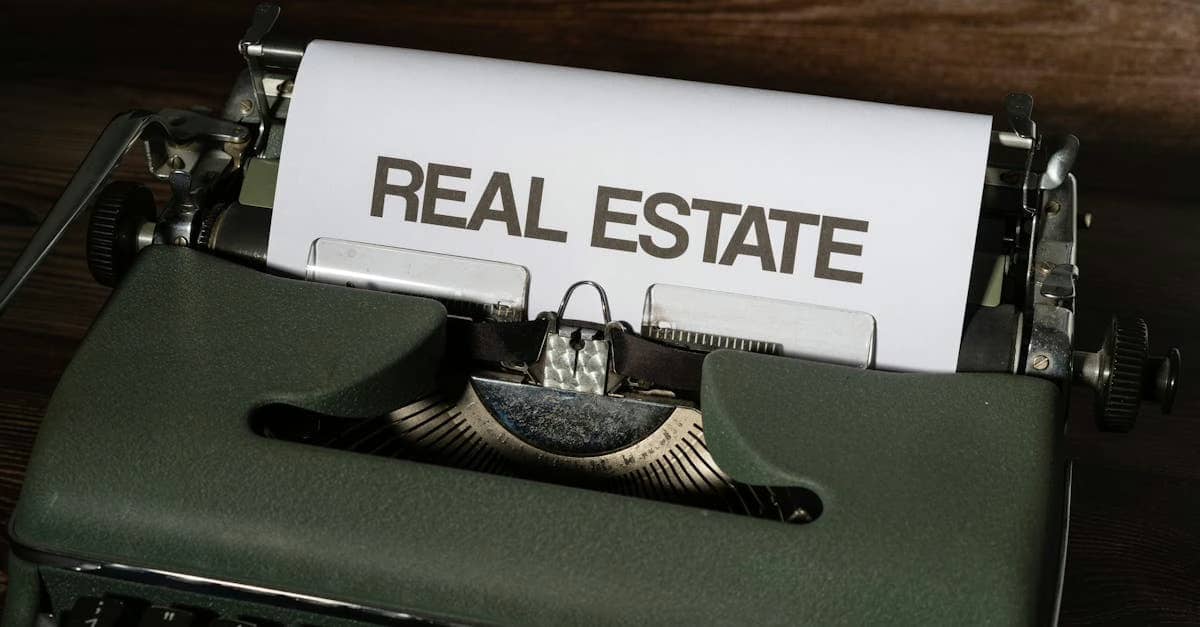The Vital Role of Property Inspection in Real Estate Broker Compliance
Property inspection is more than just a checklist item; it’s a cornerstone of risk management and client protection in real estate. For real estate brokers, managing the inspection contingency period efficiently and compliantly presents a significant operational challenge and opportunity. Delays, miscommunication, or overlooking critical details during this phase can lead to deal collapse, client dissatisfaction, and potential legal exposure. Ensuring every transaction coordinator and agent understands the nuances of the property inspection process is vital, especially when striving for robust real estate broker compliance and streamlined operations.
Understanding the Property Inspection Contingency
The property inspection contingency is a standard clause in most real estate purchase agreements. It gives the buyer the right to have the property professionally inspected within a specific timeframe and, based on the findings, request repairs, negotiate credits, or potentially withdraw from the deal without losing their earnest money deposit. For brokers, this period is fraught with deadlines and communication points that demand meticulous tracking.
A well-managed inspection process is paramount. It requires coordination between agents, buyers, sellers, inspectors, and potentially contractors. Brokerages must have systems in place to ensure all parties are aware of timelines, responsibilities, and potential outcomes. This is where the right transaction coordinator tools become invaluable, helping to monitor deadlines and manage documentation.
Key Stages of the Property Inspection Process
Scheduling the Inspection
The first step after mutual acceptance is scheduling the inspection. Buyers typically hire a licensed professional inspector. Agents must facilitate access and ensure the inspector has all necessary information. Coordination is key here to meet the contingency deadline.
Conducting the Inspection
The inspector examines the property’s major systems and structural components. Buyers and their agents often attend. This is a critical learning opportunity for the buyer about the property’s condition. A thorough inspection report is generated afterwards.
Reviewing the Inspection Report
The inspection report details findings, from minor maintenance items to significant structural issues. Buyers review this report to understand the property’s condition and identify any items they wish to address with the seller. This phase requires careful review and discussion between the buyer and their agent.
Negotiating Repairs or Credits
Based on the report, the buyer may issue an inspection response (sometimes called an addendum or repair request) to the seller. This often involves requesting specific repairs, credits, or adjustments to the purchase price. This negotiation period has its own set of deadlines and requires skilled communication.
Resolution and Contingency Removal
If the buyer and seller reach an agreement, the buyer removes the inspection contingency, moving closer to closing. If they cannot agree, the buyer may choose to withdraw from the contract, provided they follow the terms of the contingency clause precisely. Managing this resolution process is vital for brokerage efficiency.
Challenges for Brokerages During Property Inspection
Brokerages face several operational and compliance challenges during the property inspection phase. These include:
- Deadline Management: Missing inspection deadlines can have serious consequences, potentially costing clients their earnest money or jeopardizing the deal.
- Communication Coordination: Ensuring clear, timely communication between multiple parties (agents, clients, inspectors, other brokers) is complex.
- Documentation: Proper documentation of inspection reports, repair requests, and addenda is crucial for compliance and risk mitigation.
- Agent Training: Ensuring all agents understand the legal and procedural requirements of the inspection contingency is an ongoing task.
- Volume Management: High transaction volume can overwhelm manual tracking systems, leading to errors.
- Compliance Monitoring: Ensuring agents follow brokerage policies and legal requirements throughout the process requires oversight.
These pain points highlight the need for robust systems and support within a brokerage. Solutions like AI transaction coordinators and virtual assistants for real estate can significantly alleviate these burdens.
How ReBillion.ai Streamlines the Property Inspection Process
This is where modern solutions come into play, specifically how platforms like ReBillion.ai can transform how brokerages handle the property inspection phase, enhancing both compliance and efficiency. ReBillion.ai offers tools designed to automate routine tasks, improve communication, and provide better oversight, directly addressing the pain points associated with inspections.
AI-Powered Transaction Coordination
Our AI Transaction Coordinators are trained to understand the nuances of real estate transactions, including the inspection contingency. They can automatically track key dates based on contract details, send reminders to agents and clients, and ensure the necessary documents (like the inspection report and addenda) are uploaded and reviewed. This automated tracking reduces the risk of missed deadlines, a major factor in maintaining real estate broker compliance.
Imagine an AI TC automatically prompting the agent to confirm the inspection has been scheduled or alerting the team when the inspection response deadline is approaching. This frees up agents and in-house staff to focus on negotiations and client relationships rather than administrative tracking.
Virtual Assistants for Real Estate Brokers
Virtual Assistants (VAs) from ReBillion.ai can take on numerous tasks related to property inspection. They can assist with scheduling the inspector, ensuring access is arranged, following up on report delivery, and organizing the inspection documents within the transaction file. These VAs act as an extension of your back office, providing dedicated support without the overheads of traditional staffing.
Having a VA manage these coordination efforts ensures that tasks are completed promptly and accurately, contributing to smoother transactions. They can also help in drafting standard communication templates regarding the inspection process, ensuring consistency and professionalism across your team.
Workflow Automation Tools
ReBillion.ai’s platform includes powerful workflow automation tools. You can set up automated sequences specifically for the inspection period. For instance, once the contract is marked ‘Inspection Contingency Active,’ the system can automatically generate a task list for the TC or VA, send an informational email to the client about what to expect, and set calendar reminders for critical dates.
This level of automation ensures that no step is missed and that the process flows predictably and efficiently, regardless of who is handling the transaction. It standardizes the procedure, making it easier to manage quality control and compliance.
Agent-Broker Compliance Monitoring
Compliance during the property inspection phase is non-negotiable. ReBillion.ai helps with broker compliance tools by providing a centralized platform where all communication and documents related to the inspection are stored. Brokers and managers can easily access transaction files to review inspection reports, repair requests, and addenda to ensure they meet all legal and ethical standards.
The system can flag potential compliance issues, such as missing documents or approaching deadlines without resolution, allowing brokerage leadership to intervene proactively. This oversight is crucial for mitigating risk and ensuring adherence to brokerage policies and state regulations.
Smart CRM and Deal Pipelines
Our integrated Smart CRM and deal pipelines provide a clear visual representation of where each transaction stands, including the status of the property inspection contingency. Agents and managers can see at a glance which inspections are pending, which are in negotiation, and which contingencies have been removed.
This transparency improves overall transaction management and helps prioritize workloads. It also allows for better reporting and analysis of transaction bottlenecks, enabling brokerages to continually refine their processes for maximum brokerage efficiency.
Actionable Tips for Brokers to Optimize the Property Inspection Process
Based on experience, here are 3-5 immediate steps brokerages can take to improve their handling of the property inspection:
- Standardize Documentation: Create brokerage-approved templates for inspection response addenda. Ensure agents use these templates consistently to avoid errors and maintain compliance.
- Educate Your Agents: Conduct regular training sessions specifically on the property inspection contingency, covering timelines, common issues, disclosure requirements, and negotiation strategies. Leverage resources like your TC team or VAs to assist in educating agents on procedural best practices.
- Implement a Centralized Tracking System: Move away from spreadsheets or disparate systems. Use a dedicated platform (like ReBillion.ai) to log inspection dates, response deadlines, and document status for every transaction. This is key for transaction coordinator tools effectiveness.
- Define Communication Protocols: Establish clear guidelines on who communicates what, when, and how during the inspection period. For example, define whether the TC, VA, or agent is responsible for initial scheduling follow-up or document requests.
- Utilize Automation for Reminders: Set up automated reminders for all critical dates related to the inspection contingency. This proactive approach significantly reduces the chance of missing a deadline and protects your clients and brokerage.
Why a Smooth Property Inspection Process Matters for Your Brokerage
The operational and financial importance of managing the property inspection phase effectively cannot be overstated. Firstly, it is fundamental to real estate broker compliance. Failure to adhere to contract timelines and documentation requirements can lead to legal disputes, fines, and damage to the brokerage’s reputation. A rigorous process provides a defense against potential lawsuits related to undisclosed defects or procedural errors.
Secondly, efficiency in handling inspections directly impacts deal flow and brokerage efficiency. Delays during the inspection period are a common reason for transactions to fall apart or close late. Streamlining this process means fewer headaches for agents, happier clients, and faster conversion of pending deals to closed commissions. By reducing the administrative burden on agents and in-house staff through tools like AI transaction coordinators and virtual assistants for real estate, you allow them to focus on revenue-generating activities.
Furthermore, a reputation for managing transactions smoothly, including potentially contentious inspection negotiations, enhances client satisfaction and leads to repeat business and referrals. It positions your brokerage as professional and competent, giving you a competitive edge. Investing in smart back office solutions like ReBillion.ai is an investment in your brokerage’s reputation, compliance posture, and bottom line.
Key Points on Property Inspection
Effective property inspection management is critical for brokerages. It ensures real estate broker compliance, mitigates risk, prevents deal delays, and enhances client satisfaction. Leveraging technology like AI transaction coordinators and virtual assistants for real estate is key to standardizing workflows and achieving brokerage efficiency.
FAQs About Property Inspection in Real Estate
What is the typical timeframe for a property inspection contingency?
The timeframe varies by location and contract, but it is commonly 7 to 14 days from the effective date of the purchase agreement.
Who pays for the property inspection?
Typically, the buyer is responsible for hiring and paying for the property inspector and the inspection itself.
What happens if major issues are found during the inspection?
The buyer can usually request repairs, credits, or adjustments. If no agreement is reached, the buyer may withdraw from the contract within the contingency period.
Are sellers required to make all requested repairs after a property inspection?
No, sellers are generally not obligated to make requested repairs unless specifically agreed upon in the contract or an addendum.
Does a property inspection guarantee there are no issues with the home?
No, inspections are visual examinations based on readily accessible areas. They reduce risk but don’t guarantee all potential issues will be found.
Resources from ReBillion.ai
- Discover ReBillion.ai Solutions for Your Brokerage
- Explore More Real Estate Brokerage Insights on Our Blog
- Learn About Our AI Transaction Coordinators
- Find Out How Virtual Assistants Help Brokerages
- ReBillion.ai Transaction Coordination Hub
Conclusion
The property inspection phase is a critical juncture in any real estate transaction, carrying significant weight for all parties involved, especially the brokerage responsible for overseeing the process. Mastering the complexities of property inspection is non-negotiable for ensuring real estate broker compliance and achieving operational excellence. By implementing clear processes, providing adequate agent training, and leveraging smart technology, brokerages can navigate this period smoothly, protecting their clients, minimizing risk, and keeping deals on track. Embracing real estate automation and dedicated support through platforms like ReBillion.ai is not just about efficiency; it’s about building a compliant, resilient, and thriving business prepared for scale.
ReBillion.ai helps real estate brokers streamline operations with AI-powered transaction coordination, virtual assistants, and intelligent back-office automation. Whether you’re scaling your team or closing more deals, ReBillion.ai is built to simplify your brokerage’s compliance, efficiency, and growth. Visit ReBillion.ai to explore solutions or schedule a consultation.


